Stromatolites are one of the oldest and most fascinating forms of life on Earth. These ancient structures are formed by the layered growth of cyanobacteria and other microorganisms, which trap and bind sediment particles to create a distinctive dome-shaped or columnar structure. Stromatolites have been found in rocks dating back over 3.5 billion years, making them some of the earliest evidence of life on our planet.
Despite their incredible age and significance, stromatolites are not well-known to the general public. These ancient structures are often overlooked in favor of more charismatic forms of life, such as dinosaurs or giant trees. However, stromatolites are a crucial part of the Earth’s history and ecology, and they continue to play important roles in modern ecosystems.
In this article, we will explore the top 12 largest stromatolites in the world. These incredible structures are found in a variety of locations, from remote lakes in Australia to ancient rock formations in North America. Each of these stromatolites has its own unique history and ecology, and together they provide a fascinating glimpse into the early history of life on Earth.
Shark Bay, Australia
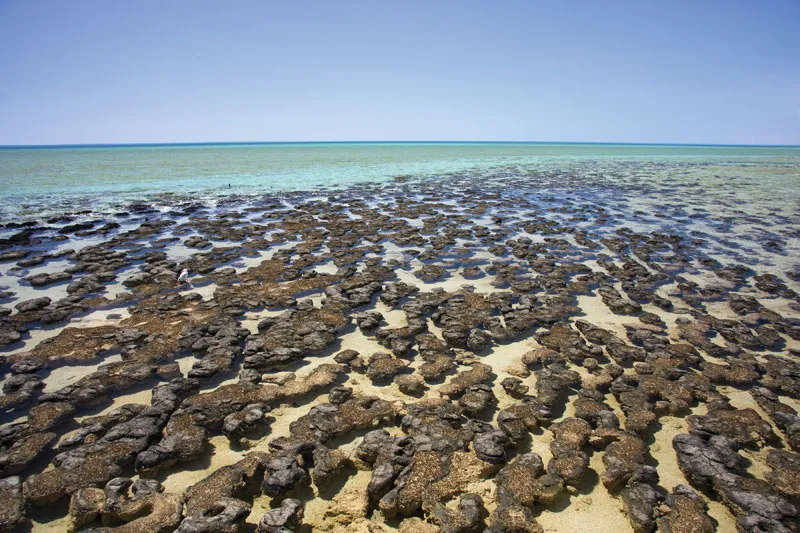
Shark Bay, located on the western coast of Australia, is home to some of the largest and most extensive stromatolite communities in the world. These stromatolites are found in the hypersaline waters of Hamelin Pool, a shallow embayment that is cut off from the Indian Ocean by a series of sand bars and seagrass beds.
The stromatolites of Shark Bay are estimated to be around 3,000 years old, and they form extensive reef-like structures that can reach up to 1.5 meters in height. These stromatolites are composed primarily of the cyanobacterium Entophysalis major, which forms a distinctive dark green layer on the surface of the structures.
The stromatolites of Shark Bay are protected within the Hamelin Pool Marine Nature Reserve, which was established in 1990 to preserve these unique structures and the ecosystems they support. The reserve is also home to a variety of other marine life, including dolphins, dugongs, and a wide variety of fish and invertebrates.
Highborne Cay, Bahamas

Highborne Cay is a small island located in the Exuma Cays of the Bahamas, and it is home to some of the largest and most well-studied stromatolites in the Caribbean. These stromatolites are found in a shallow, hypersaline lagoon on the western side of the island, where they form extensive reef-like structures that can reach up to 2 meters in height.
The stromatolites of Highborne Cay are composed primarily of the cyanobacterium Schizothrix, which forms a distinctive reddish-brown layer on the surface of the structures. These stromatolites are thought to be relatively young, with ages ranging from a few hundred to a few thousand years.
Despite their relatively young age, the stromatolites of Highborne Cay are an important part of the island’s ecology. They provide habitat for a variety of marine life, including fish, crustaceans, and mollusks, and they play a role in stabilizing the surrounding sediments and protecting the island from erosion.
Lake Thetis, Australia
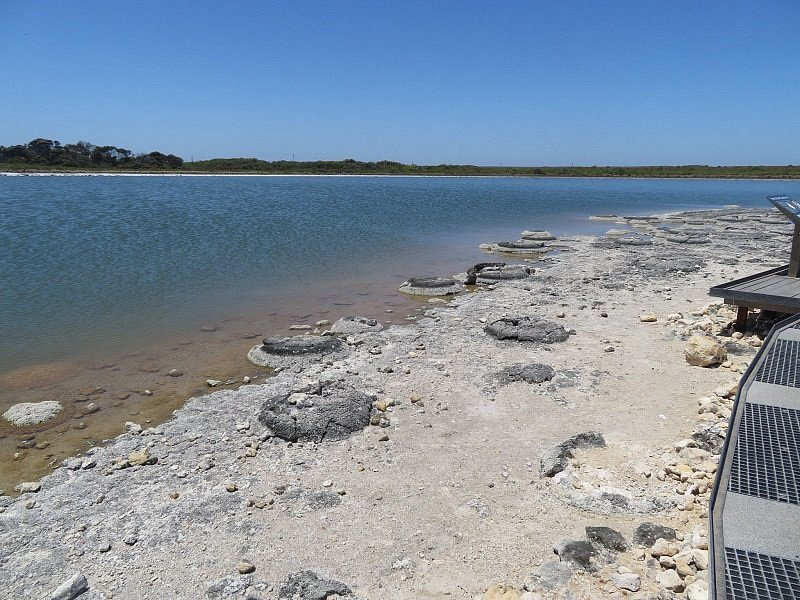
Lake Thetis is a small, hypersaline lake located in Western Australia, and it is home to some of the largest and most diverse stromatolite communities in the world. These stromatolites are found in the shallow waters around the edge of the lake, where they form extensive reef-like structures that can reach up to 1 meter in height.
The stromatolites of Lake Thetis are composed of a variety of cyanobacterial species, including Entophysalis and Scytonema, which form a distinctive dark green layer on the surface of the structures. These stromatolites are thought to be relatively young, with ages ranging from a few hundred to a few thousand years.
Despite their relatively young age, the stromatolites of Lake Thetis are an important part of the lake’s ecology. They provide habitat for a variety of aquatic life, including fish, crustaceans, and insects, and they play a role in maintaining the lake’s unique chemical and biological properties.
Lagoa Salgada, Brazil
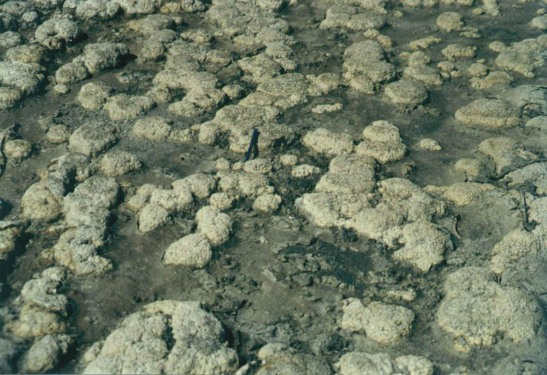
Lagoa Salgada is a hypersaline lagoon located in the state of Rio Grande do Norte in northeastern Brazil, and it is home to some of the largest and most extensive stromatolite communities in South America. These stromatolites are found in the shallow waters around the edge of the lagoon, where they form extensive reef-like structures that can reach up to 1.5 meters in height.
The stromatolites of Lagoa Salgada are composed primarily of the cyanobacterium Microcoleus chthonoplastes, which forms a distinctive dark green layer on the surface of the structures. These stromatolites are thought to be relatively young, with ages ranging from a few hundred to a few thousand years.
Despite their relatively young age, the stromatolites of Lagoa Salgada are an important part of the lagoon’s ecology. They provide habitat for a variety of aquatic life, including fish, crustaceans, and mollusks, and they play a role in maintaining the lagoon’s unique chemical and biological properties.
Cuatro Ciénegas Basin, Mexico

The Cuatro Ciénegas Basin is a unique desert ecosystem located in the state of Coahuila in northern Mexico, and it is home to some of the most diverse and well-studied stromatolite communities in the world. These stromatolites are found in a series of small, hypersaline pools and streams that are fed by underground springs.
The stromatolites of the Cuatro Ciénegas Basin are composed of a variety of cyanobacterial species, including Scytonema and Rivularia, which form a distinctive dark green layer on the surface of the structures. These stromatolites are thought to be relatively old, with ages ranging from several thousand to several million years.
The stromatolites of the Cuatro Ciénegas Basin are an important part of the region’s ecology, and they have been studied extensively by scientists from around the world. These unique structures provide habitat for a wide variety of aquatic life, including fish, crustaceans, and insects, and they play a role in maintaining the basin’s unique chemical and biological properties.
Great Salt Lake, United States
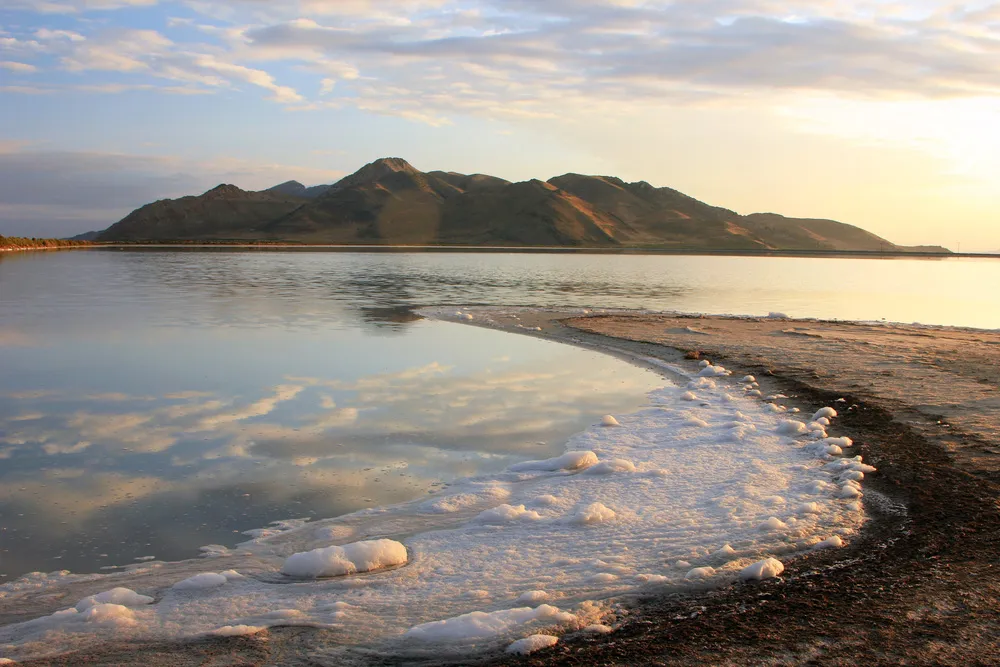
The Great Salt Lake is a large, hypersaline lake located in the state of Utah in the western United States, and it is home to some of the largest and most extensive stromatolite communities in North America. These stromatolites are found in the shallow waters around the edge of the lake, where they form extensive reef-like structures that can reach up to 1 meter in height.
The stromatolites of the Great Salt Lake are composed primarily of the cyanobacterium Aphanothece, which forms a distinctive dark green layer on the surface of the structures. These stromatolites are thought to be relatively young, with ages ranging from a few hundred to a few thousand years.
Despite their relatively young age, the stromatolites of the Great Salt Lake are an important part of the lake’s ecology. They provide habitat for a variety of aquatic life, including brine shrimp and other invertebrates, and they play a role in maintaining the lake’s unique chemical and biological properties.
Pavilion Lake, Canada

Pavilion Lake is a freshwater lake located in British Columbia, Canada, and it is home to some of the most unique and well-studied stromatolite communities in the world. These stromatolites are found in the deep, cold waters of the lake, where they form distinctive columnar structures that can reach up to 2 meters in height.
The stromatolites of Pavilion Lake are composed of a variety of bacterial species, including cyanobacteria and purple sulfur bacteria, which form a distinctive dark green or purple layer on the surface of the structures. These stromatolites are thought to be relatively old, with ages ranging from several thousand to several million years.
The stromatolites of Pavilion Lake have been studied extensively by scientists from around the world, and they have provided important insights into the early history of life on Earth. These unique structures are also an important part of the lake’s ecology, providing habitat for a variety of aquatic life and playing a role in the lake’s nutrient cycling and primary productivity.
Lake Richmond, Australia
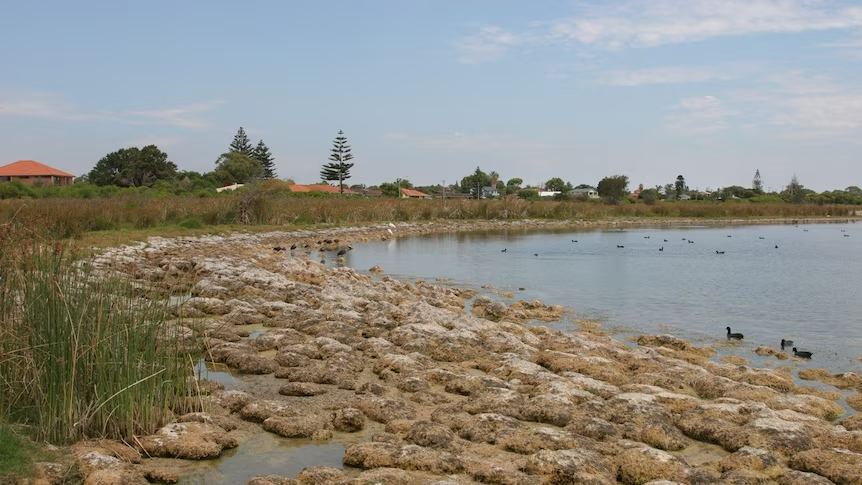
Lake Richmond is a small, freshwater lake located in Western Australia, and it is home to some of the most unique and diverse stromatolite communities in the world. These stromatolites are found in the shallow waters around the edge of the lake, where they form extensive reef-like structures that can reach up to 1 meter in height.
The stromatolites of Lake Richmond are composed of a variety of cyanobacterial species, including Scytonema and Calothrix, which form a distinctive dark green layer on the surface of the structures. These stromatolites are thought to be relatively young, with ages ranging from a few hundred to a few thousand years.
Despite their relatively young age, the stromatolites of Lake Richmond are an important part of the lake’s ecology. They provide habitat for a variety of aquatic life, including fish, crustaceans, and insects, and they play a role in maintaining the lake’s unique chemical and biological properties.
Lake Turkana, Kenya

Lake Turkana is a large, hypersaline lake located in the Great Rift Valley of Kenya, and it is home to some of the largest and most extensive stromatolite communities in Africa. These stromatolites are found in the shallow waters around the edge of the lake, where they form extensive reef-like structures that can reach up to 1.5 meters in height.
The stromatolites of Lake Turkana are composed primarily of the cyanobacterium Entophysalis major, which forms a distinctive dark green layer on the surface of the structures. These stromatolites are thought to be relatively old, with ages ranging from several thousand to several million years.
The stromatolites of Lake Turkana are an important part of the lake’s ecology, and they have been studied extensively by scientists from around the world. These unique structures provide habitat for a wide variety of aquatic life, including fish, crustaceans, and mollusks, and they play a role in maintaining the lake’s unique chemical and biological properties.
Laguna Bacalar, Mexico
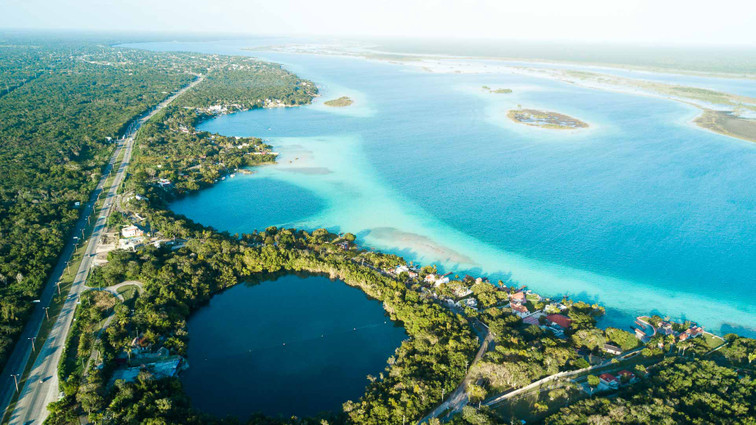
Laguna Bacalar is a large, freshwater lake located in the state of Quintana Roo in southeastern Mexico, and it is home to some of the largest and most extensive stromatolite communities in the Caribbean. These stromatolites are found in the shallow waters around the edge of the lake, where they form extensive reef-like structures that can reach up to 2 meters in height.
The stromatolites of Laguna Bacalar are composed of a variety of cyanobacterial species, including Scytonema and Calothrix, which form a distinctive dark green layer on the surface of the structures. These stromatolites are thought to be relatively young, with ages ranging from a few hundred to a few thousand years.
Despite their relatively young age, the stromatolites of Laguna Bacalar are an important part of the lake’s ecology. They provide habitat for a variety of aquatic life, including fish, crustaceans, and mollusks, and they play a role in maintaining the lake’s unique chemical and biological properties.
Lake Salda, Turkey

Lake Salda is a large, freshwater lake located in southwestern Turkey, and it is home to some of the largest and most unique stromatolite communities in Europe. These stromatolites are found in the shallow waters around the edge of the lake, where they form extensive reef-like structures that can reach up to 1 meter in height.
The stromatolites of Lake Salda are composed of a unique assemblage of cyanobacterial species, including Rivularia and Calothrix, which form a distinctive white or light gray layer on the surface of the structures. These stromatolites are thought to be relatively old, with ages ranging from several thousand to several million years.
The stromatolites of Lake Salda are an important part of the lake’s ecology, and they have been studied extensively by scientists from around the world. These unique structures provide habitat for a wide variety of aquatic life, including fish, crustaceans, and mollusks, and they play a role in maintaining the lake’s unique chemical and biological properties.
Conclusion
The stromatolites featured in this article represent some of the largest and most unique examples of these ancient structures found around the world. From the hypersaline waters of Shark Bay in Australia to the freshwater lakes of Canada and Turkey, these stromatolites provide a fascinating glimpse into the early history of life on Earth and the incredible diversity of modern microbial communities.
Despite their importance, stromatolites are often overlooked and underappreciated by the general public. These ancient structures are not as charismatic or well-known as other forms of life, such as dinosaurs or giant trees, but they are no less important or fascinating. Stromatolites have played a crucial role in the evolution and ecology of our planet for billions of years, and they continue to shape and influence modern ecosystems in ways that we are only beginning to understand.
As we continue to study and explore the world’s stromatolites, it is important that we work to protect and preserve these unique and valuable structures. Many stromatolite communities are threatened by human activities, such as pollution, development, and climate change, and it is up to us to ensure that these ancient forms of life are able to thrive and persist for generations to come.
By raising awareness about the importance and diversity of stromatolites, we can help to promote a greater appreciation and understanding of these fascinating structures and the incredible history of life on our planet. Whether you are a scientist, a nature enthusiast, or simply someone who is curious about the world around you, learning about stromatolites is a rewarding and enriching experience that is sure to leave you with a greater sense of wonder and appreciation for the complexity and beauty of the natural world.

